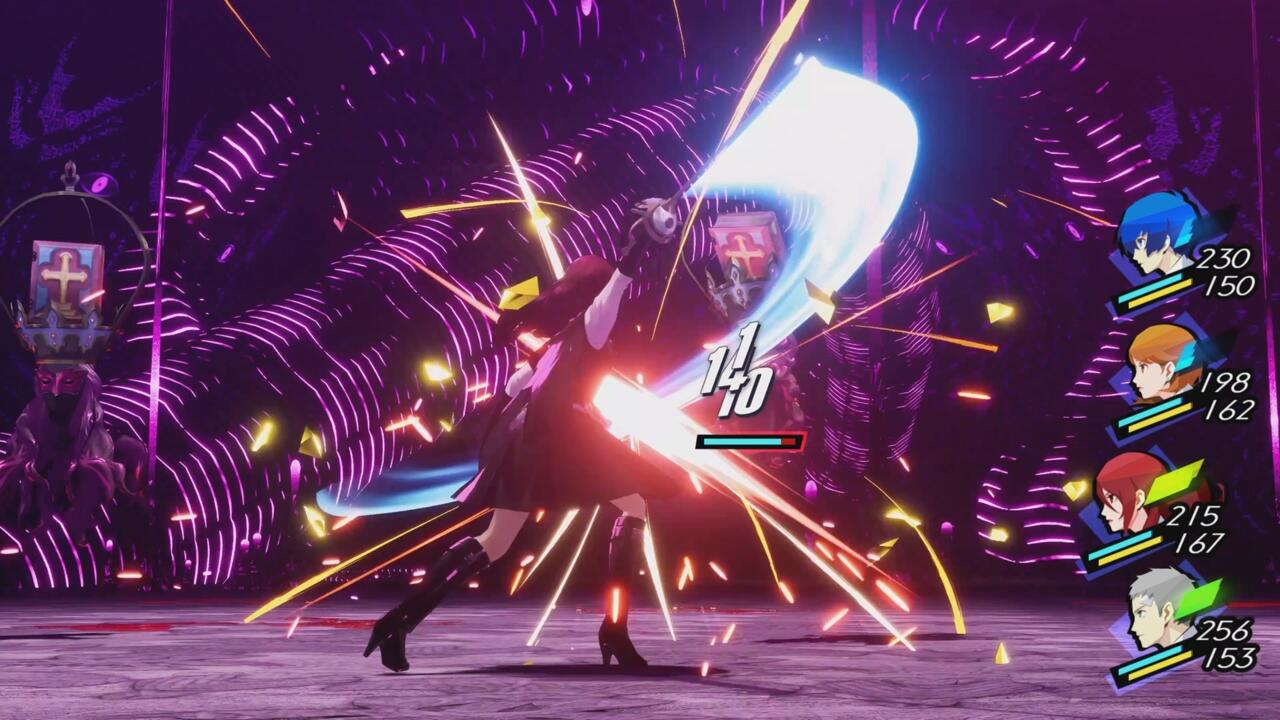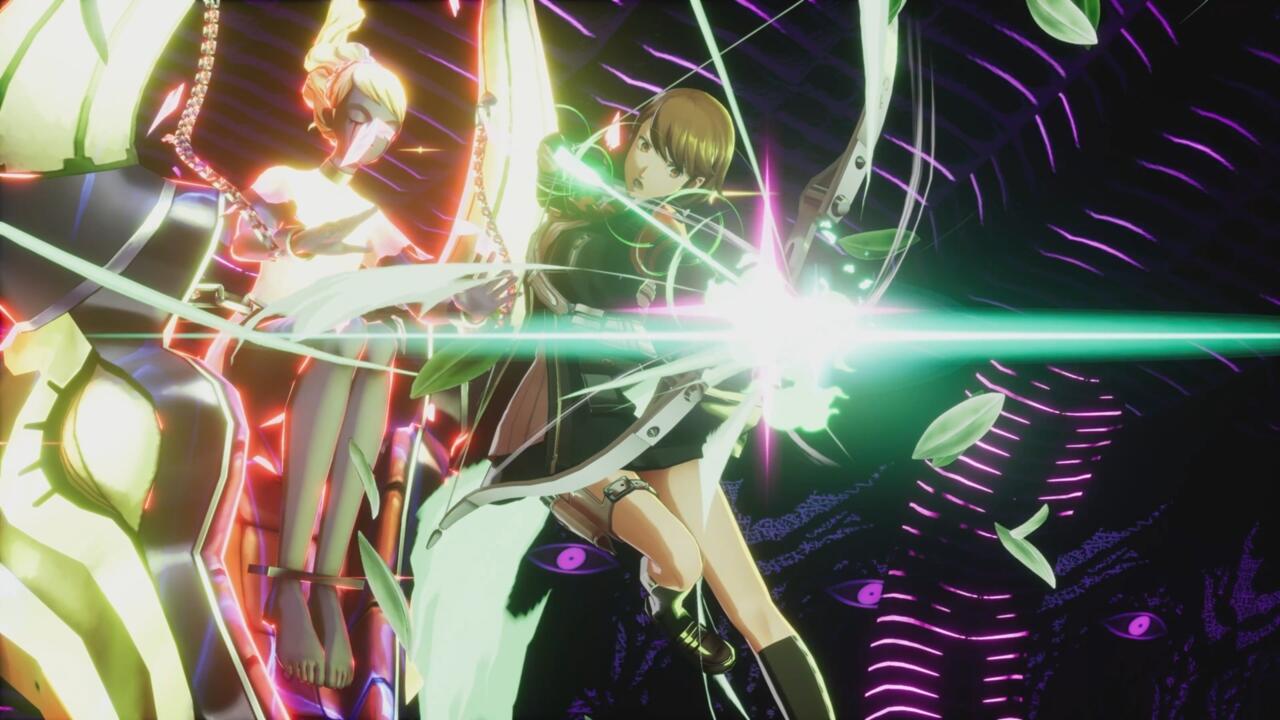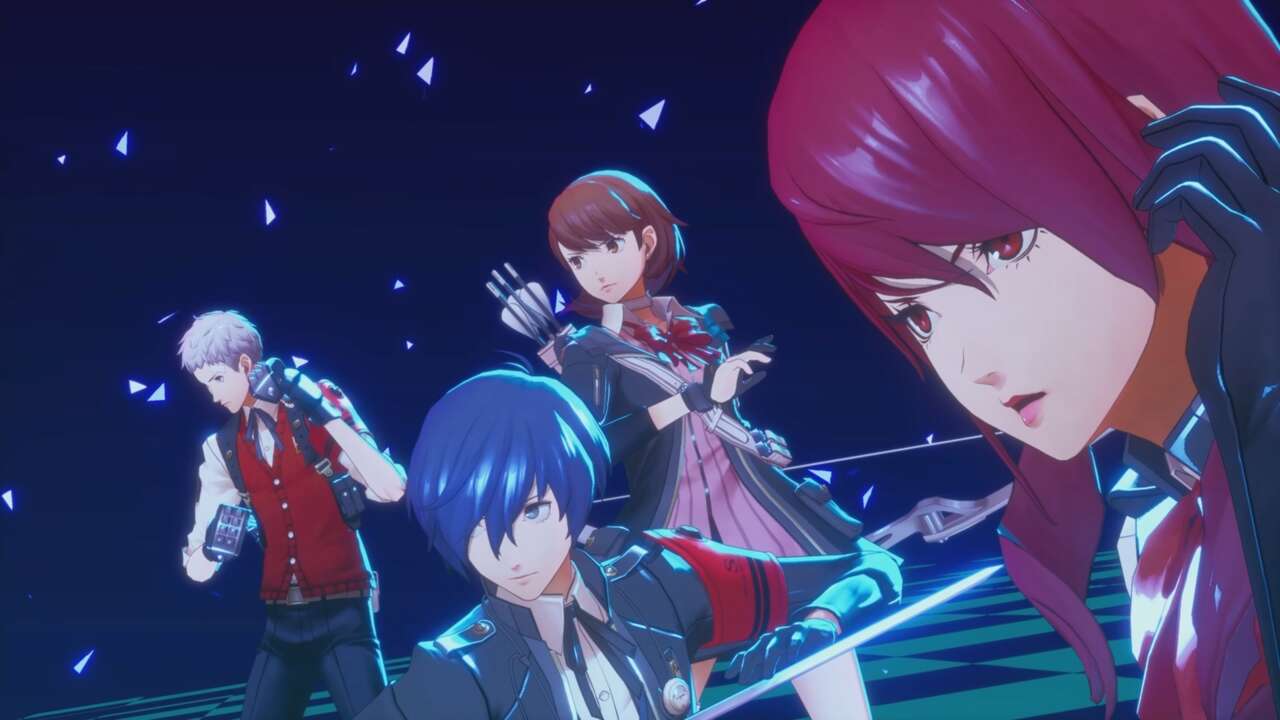When I picked up the controller and put my headphones on to play Persona 3 Reload for the first time, I was hit with a wave of nostalgia. I knew where everything was in the halls of Gekkoukan High School, I knew all the spots at Paulownia Mall, and I knew where I’d find all my friends across the city of Port Island. And the fresh remixing of old songs hit me deeply to instill the feeling of Persona 3’s uncanny mix of joy and dread all over again.
Based on a preview of the game, P3R looks to be as faithful of a remake as one could possibly ask for. It’s very much that same PS2-era RPG that first established Persona’s social-sim and calendar systems alongside the dungeon-crawling gameplay, but now with the art style and visual flourishes reminiscent of Persona 5. Even though my hands-on preview session was only a little over an hour long, I was already starting to piece together what P3R is from what I saw and the five or so times I’ve finished Persona 3 in its various older forms.
That’s not to say there aren’t modernizations beyond the visual overhaul, however. Little things like easier ways to track your daily activities are key to helping map out how you want to spend your days, and bigger deals like revamped Social Links let you get more out of the characters during your free time in-game. Although Tartarus serves the same purpose as the original game–a 250-something floor tower where most of the RPG combat and exploration takes place–numerous quality-of-life updates give the dungeon crawling much-needed momentum. And you can count on the tried-and-true turn-based combat system that revolves around elemental affinities and swapping personas for different movesets to be as satisfying as it was the first time around. This time, however, each party member has a Limit Break-style meter to initiate extra-strong Theurgy attacks and a Baton Pass mechanic similar to Persona 5 that helps you hit weaknesses with greater efficiency.
Maintaining the original experience with sensible updates was the intention, according to director Takuya Yamaguchi. “We knew if we changed too much, it would start losing the spirit and the soul that made Persona 3,” he told me in an interview. “We looked at every single part, even the small stuff, and we discussed amongst the teams: Can we change this without losing that essence? Would it feel less like Persona 3? And so that’s kind of how we decided what we would change.” Lead producer Ryota Niitsuma added, “Over half of the staff working on Persona 3 Reload were people who were players when the original one came out. But each one of them has their own idea of what makes Persona 3 special. So there was very much a lot of love being put into it, but then obviously lots of different opinions.”
It seems Atlus leaned heavily on an ethos of upholding the spirit and intent of the source material at the end of the day. The silent blue-haired emo boy with his headphones hanging around his neck as the protagonist–he’s still that dude. Classmates and party members of the SEES crew are just how they were all those years ago while being presented in a few new ways. That much was clear in the demo that dropped me in an early part of the game where I could roam the school and city and initiate a few Social Links during the free time of my in-game day.
When hanging out with Akihiko at night to boost my social standing with him, he was ready to throw hands with some street harassers and then talked about wanting to get stronger and focus on being the best boxer he could be. It’s sort of his ongoing theme, and you’ll uncover a deeper understanding of where that desire comes from. So, while there are completely new Social Link events such as this one, these are still driving the same themes on a familiar character arc within a largely unchanged framework. More striking were new social events that featured all of the cast up to this point chilling in the dorm at night, bonding over seemingly mundane things or cooking together–these are small but sweet moments that bring a bit more charm out of a crew that has been and will go through rough times. I’d also hope that, in the process of rethinking these elements, the game can grow up and move on from some wildly problematic lines of dialogue and Social Link events in the original game.
It’s worth noting how the more granular sequence of narrative events have been shuffled around. For example, the character Fuuka was already in the party as the team navigator, indicating that her introduction takes place much earlier in Reload compared to the original story. I asked about the extent to which this changes the story and Yamaguchi said, “We haven’t made any major changes to the story itself. We wanted to keep the main story as it was. However, what we did do is we added new Social Link episodes and story deep dives that flesh out the world a little bit.” When I mentioned Fuuka’s new place in the story, he added, “As you did notice, we made a couple of tweaks to the timing of when things happen. However, nothing major that would affect the overall game. We did look at the game as a whole and made decisions to change the order of little things that will improve the overall experience. So we did make little tweaks like that.”
From a gameplay perspective, adhering to the original vision may turn out to be one of its biggest shortcomings. Ascending the floors of Tartarus is likely to be a repetitive grind again, just as it was back then. I do get a kick out of going into a mental autopilot and clearing out the randomly-generated floors before reaching the next big boss battle. But when Tartarus is the driving force for combat, outside of the bespoke story-centric sequences, your patience can wear thin. Although the new, eccentric visual stylings exude an air of confidence I love seeing in this cast of characters, making the gameplay experience all the more enjoyable, the untouched foundational aspects may highlight the fact that this was indeed a product of its time and the first attempt at the modern Persona formula.

However, Persona 3 is so much more than dungeon-crawling through Tartarus. There’s something timeless about its take on a coming-of-age tale and how people handle tragedy early in life. Despite the upbeat overtones you get upon first impression, an ever-present existential dread hangs over the entire game and what comes out of it is an emotionally honest story that’s delivered through characters I consider the strongest in the Persona pantheon. Even if you don’t see it from the outset, each member of the SEES crew is broken in some way and they’re very forthright in confronting the pain that comes with that.
Given the time since the release of the original game, I asked Yamaguchi about his perception of Persona 3’s darkness and how that may have evolved over the years. “Death, the end of things, and how to spend your limited time remaining, these are themes that don’t really fade with time. All humans are kind of always facing that,” he said. “As someone from when I first played the game to now, I probably feel about it the same way as I used to. In many ways, the most important parts of that made Persona 3 what it was haven’t changed.”
How the cast’s personalities are woven into the story’s themes remains some of the best character work I’ve seen in an RPG. I’m hoping all of that still comes through in Reload, and I came away from the preview demo confident that it can–especially considering the new voice actors, who embody each character extremely well. It’s almost shocking how they’re able to capture familiar tones yet feel different enough to be fresh and spirited takes on characters I’ve known for so long. And that’s all I could ask from the new cast: for them to take ownership of these roles while staying true to who these characters have always been.

At first listen, I had some reservations about the new music, particularly the re-recorded versions of the old tracks. The new lead singer will take some getting used to for sure, but the spirit remains intact, and these new arrangements remain as evocative as ever. From the demo alone, I’ve already heard some brand-new songs that are already stuck in my head and absolutely nail the vibe of Persona 3. Part of that comes from rapper Lotus Juice, who returns to lend his unmistakable flow and deep vocals for Reload’s music. Persona 3’s soundtrack is so memorable for being this wild mix of soulful J-pop and nu-metal rap-rock that shouldn’t work, yet absolutely does, which has been ingrained into its identity and legacy.
A remake of Persona 3 in this vein used to be a pie-in-the-sky wish for me, daydreaming of reliving one of the most personally impactful stories fully realized in a modern visual style akin to Persona 5–and it’s what I ruminated on most when I reviewed Persona 3: Dancing In Moonlight years ago. While we won’t get a reimagining of the post-game story called The Answer from the Persona 3 FES re-release or the female lead from Portable (who I still consider the best Persona protagonist), Persona 3 Reload seems to be hitting all the right notes without straying too far from the source material. It won’t necessarily replace the original versions, because the PS2-era has a way of encapsulating a specific time and place that just can’t be replicated. I suppose it’s in Persona 3’s DNA to never get a truly definitive version, but if Persona 3 Reload can send the same message as powerfully as it did in the mid-2000s, I’ll say it’s a remake worth having.
